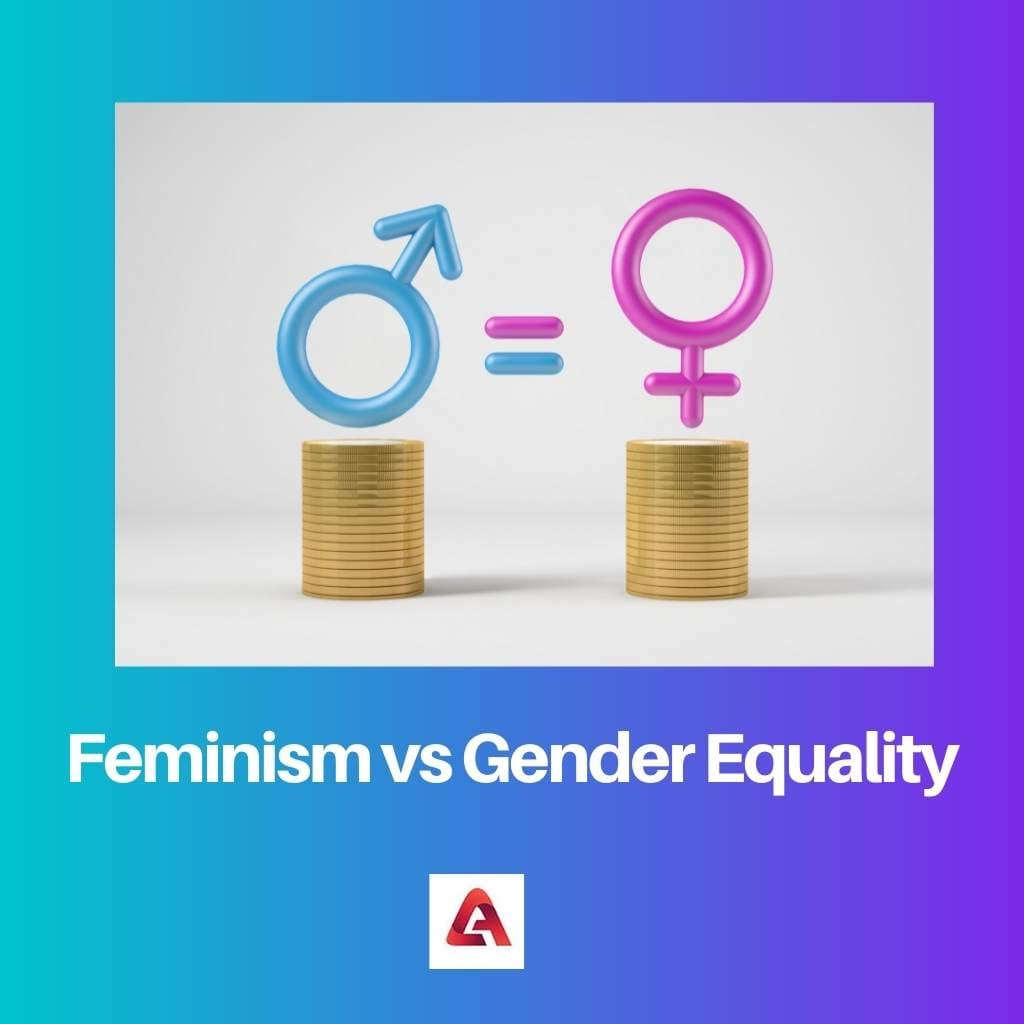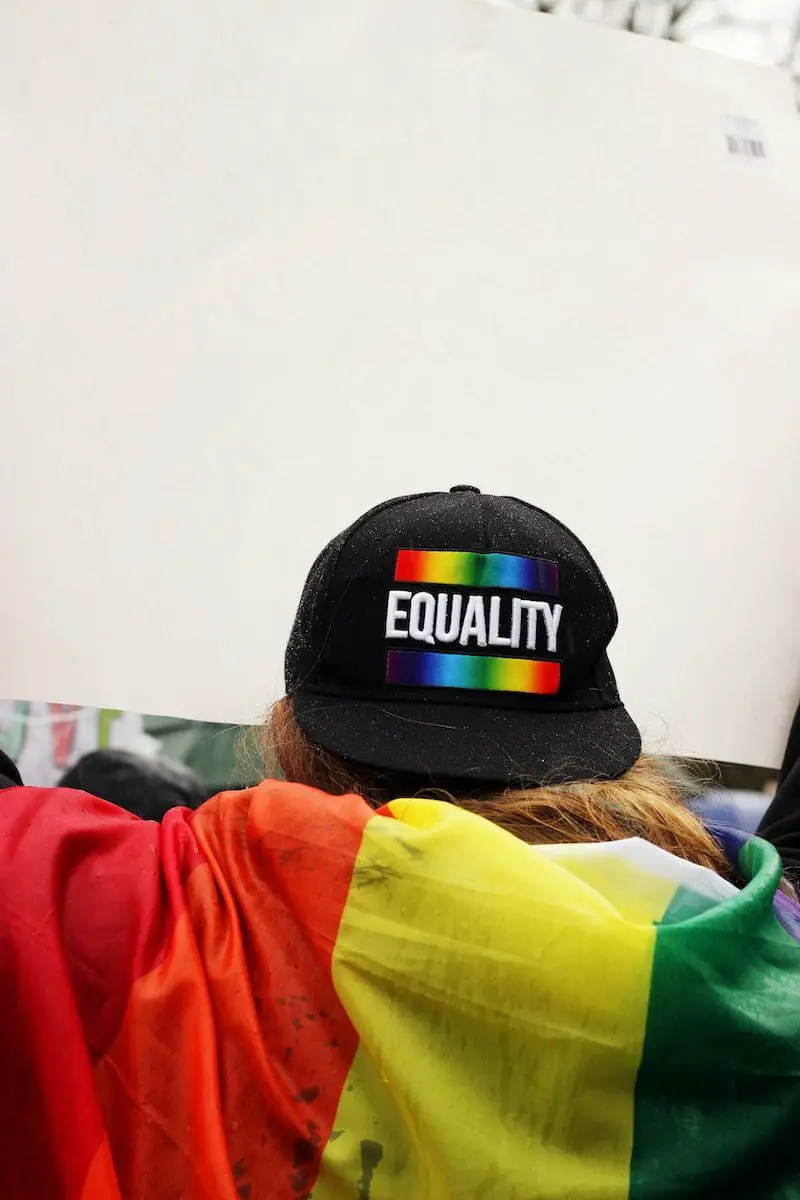The nuances between Feminism and Gender Equality have made everyone bewildered, especially men. On the whole, it is about fifty-fifty opportunities.
Key Takeaways
- Feminism is a social, political, and cultural movement that advocates for women’s rights and aims to eliminate gender-based discrimination. At the same time, Gender Equality is the belief that men and women should have equal rights and opportunities in all areas of life.
- Feminism recognizes that women have historically been oppressed and aims to address this inequality. In contrast, Gender Equality aims to eliminate all forms of gender-based discrimination, including those experienced by men and non-binary people.
- Feminism involves challenging and changing social norms and power structures that perpetuate gender inequality. In contrast, Gender Equality involves promoting equal opportunities and access to resources for all genders.
Feminism vs Gender Equality
The difference between Feminism and Gender Equality is that feminism relates to the main interests of women. Meanwhile, gender equality correlates with the rights of both men, women, and other genders exhibit in society. Moreover, the belief and obligation define each term in depth. Besides, both of them tend to refer to parity among distinct genders.

It is more or less connected to the women’s point of view, primarily their struggles in the fields, where men are prioritized, despite women’s perspicacity.
In that case, they fully underscore the interests of people globally, regardless of their gender. Although, parity in status, power, and prestige between those who are identified as human beings.
Comparison Table
| Parameters of Comparison | Feminism | Gender equality |
|---|---|---|
| Meaning | Feminism is a social and political movement of women who feels that men suppress women or women’s opinions are considered disinterest in the name of weaker sexes. Feminism is an act of protests built for women’s power in the world of all genders. | Gender equality aims to equal opportunities for both the female, male and other genders. Gender equality plays a fair role in society, political and economic activities. |
| History | The word “Feminism” is derived from the woman Mary Wollstonecraft in 1792 in a book “A Vindication of the Rights of Women” and later feminism was incipient in 1837 by Charles Fourier, who bolstered women’s rights in case of jobs opening to everyone based on skills, aptitude and knowledge. After that, feminism has been spoken all over the world. | In 1405 the book “The Book Of the City of Ladies” by Christine de Pizan stated Gender equality. |
| Types | There are four waves in feminism based on the period- Feminist theory, Liberal Feminism, Marxist feminism, Radical and Dual-system Feminism. | There is the neutral type where gender equality where people are treated equally and fairly. |
| Laws | Criminalising Marital Rape, Women’s Political participation, Decriminalising Homosexuality and Revisiting Abortion Laws | Equality before the law, Non-discrimination on the Grounds of religions, Caste, or Place of birth, Equality of Opportunities for all and Equal rights to Adequate means of Livelihood. |
| Movements | Numerous movements have been conducted regarding domestic violence, Maternity leave, equal payment, sexual violence and women’s suffrage. | Gender equality movements are widely renowned such as women empowerment, Freedom, same-sex marriage, Child marriage, freedom to dress and Gender stereotypes. |
What is Feminism?
It initially garnered popularity among Western countries, with top emerging activists achieving actively till this very moment.
Accordingly, feminism includes the right to vote, public position, equality in the workplace, proper education, and other kinds of stuff for women.
Shortly, it also covered the issues faced by women for years and years, such as rape, domestic violence, sexual harassment, sulky marriage proposals, and so on. However, many feminist organizations faced backslashes for not focusing on underprivileged women’s lives.
Alongside, feminism has been divided into four waves to pay more attention specifically to each issue; namely, the first one to promote women’s right to vote, secondly, equality in society, third, looking keenly at each diversity for lending hands to individuals, and lastly, the introduction of “ME TOO movement”.

What is Gender Equality?
According to ethnologists, Gender Equality is not specifically about men or women but overall kinds of genders, including transgenders too. Originally, the real meaning of Gender Equality came out in the 14th century.
Following the post-war convention, they were much more effective than the pre-war’s. Starting from convections against gender stereotypes, sexism, violence against the weaker sex, and for justice and equality in social and political decision-making events.
Gender Equality handles matters such as sex ratio, Gender empowerment, sex, and gender distinction, Coloniality of gender, and so on.

Main Differences Between Feminism and Gender Equality
- The major difference between Feminism and Gender Equality is the Party, where Feminism focuses on the Female gender, whereas Gender equality spays fair and square attention to everyone.
- In history, Feminism was introduced by Mary Wollstonecraft in 1792 in the book “A Vindication of the Rights of Women”. On the other hand, Gender equality


It’s crucial to recognize the essential differences between feminism and gender equality, which encompass distinct yet complementary goals in advancing equity and justice for all genders.
Absolutely, understanding the nuanced differences between these movements is essential to charting a path towards comprehensive gender equity.
Yes, recognizing the unique contributions of feminism and gender equality is pivotal in fostering inclusive and equitable societies.
Feminism involves waves of activism that delve deeper into specific issues affecting women, while gender equality focuses on the fair treatment of all genders.
Yes, the waves of feminism illustrate the evolving priorities and objectives of the movement.
Gender equality initiatives continually strive to address systemic issues such as gender distinction and empower individuals from diverse backgrounds, including transgender individuals.
The multifaceted nature of gender equality efforts underscores the ongoing need for comprehensive and intersectional approaches to address societal inequities.
Indeed, gender equality efforts recognize the importance of inclusivity and representation for all individuals, irrespective of gender.
Feminism and gender equality both aim to address gender-based discrimination, but feminism seeks to challenge and change social norms and power structures, while gender equality focuses on promoting equal opportunities and resources for all genders.
I see, feminism is more about systemic change, while gender equality is about ensuring fairness and justice for everyone.
It’s essential to understand the multifaceted nature of feminism, which addresses issues such as voting rights, workplace equality, and gender-based violence.
Absolutely, the complexity of feminist issues highlights the need for comprehensive solutions and advocacy.
Gender equality is about ensuring equal rights and opportunities for all genders, not just men and women. Feminism, on the other hand, is specifically focused on women’s rights and addressing historical oppression.
That’s a great point! Feminism delves deeper into the unique struggles and challenges faced by women.
The history and movements associated with feminism and gender equality are deeply rooted in advocating for equal rights and challenging gender discrimination.
Absolutely, it’s fascinating to see the evolution of these movements and their impact on society.
Indeed, understanding the history of these movements provides valuable context for their current goals and initiatives.
Gender equality movements address a wide range of issues, including freedom to dress, same-sex marriage, and gender stereotypes, showcasing the broad scope of gender equality efforts.
Absolutely, gender equality encompasses diverse concerns and strives for comprehensive social change.
It’s crucial to recognize the intersectional nature of gender equality efforts, as they impact individuals from different backgrounds and experiences.
Gender equality movements have been instrumental in addressing critical aspects such as gender empowerment and challenging gender stereotypes, contributing to more inclusive and equitable societies.
Absolutely, the impact of gender equality movements extends to promoting diverse representation and dismantling harmful societal norms.
Feminism and gender equality have unique origins and historical developments, emphasizing their distinct yet interconnected goals of achieving gender equity.
Yes, the historical context of these movements provides valuable insights into their current objectives and challenges.